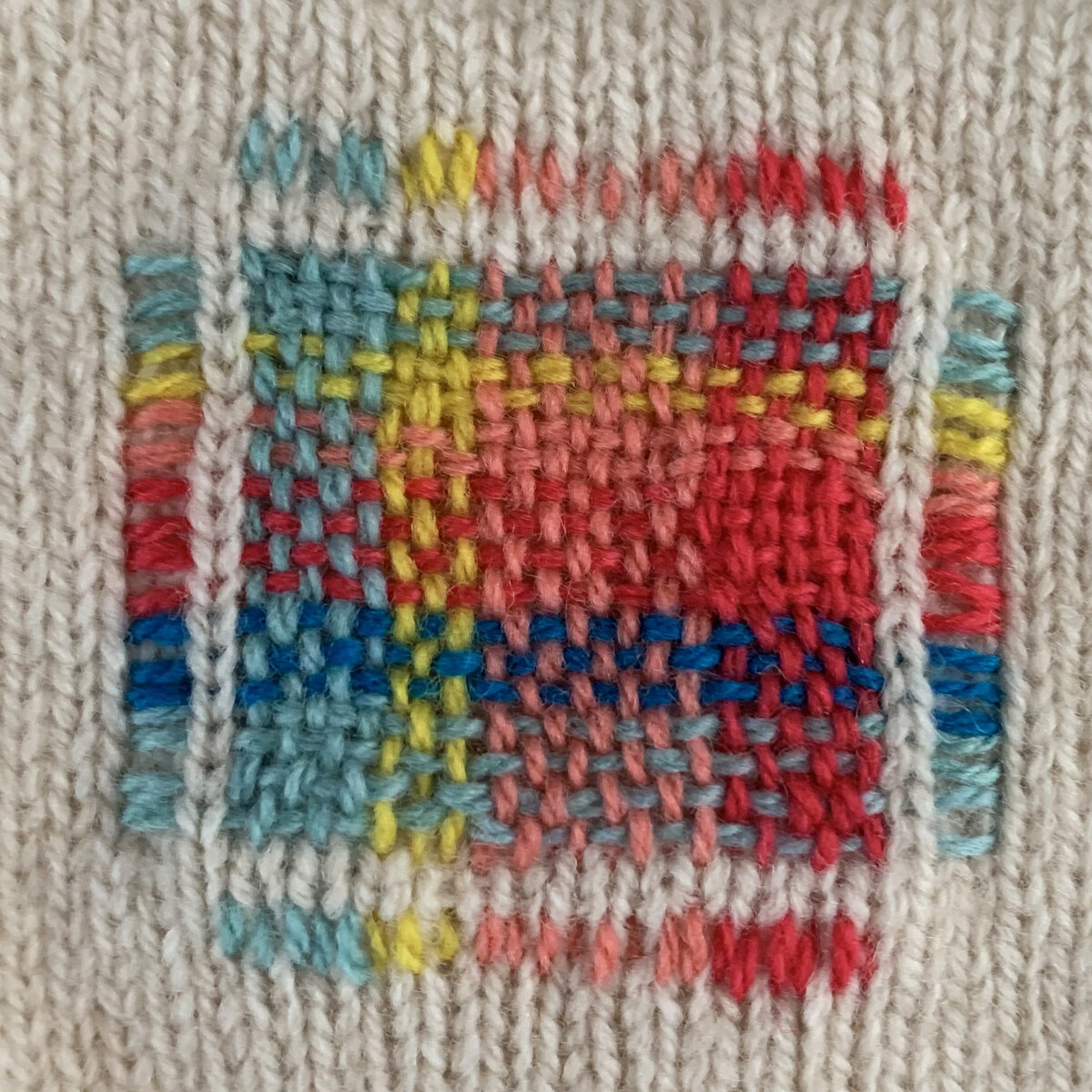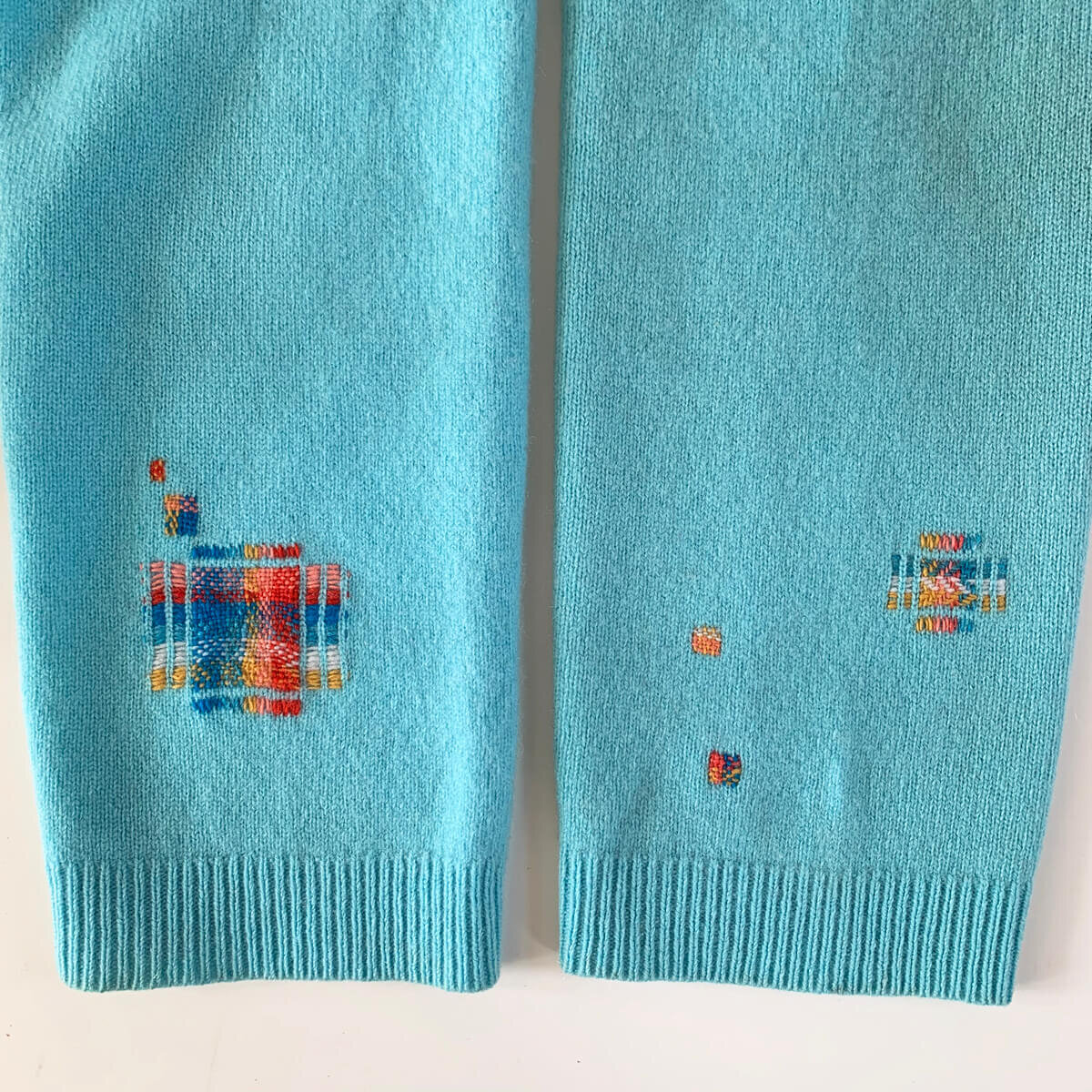5 Tips for How to Mend Your Knitwear
I often get asked for tips on how to mend your knitwear. There are a few simple things you can do to that will help, so I thought I would share them. One of the great things about mending is that you don’t need much in the way of materials and equipment, so its easy to get started.
Mending your Knitwear Tip 1: Choosing your materials
Use materials that are suitable for the item you’re mending. If it’s a fine knit, don’t use a thick yarn for example, and if it’s a chunky knit, don’t use yarn that’s too thin (you can always double up thin yarn to make it thicker). Ideally, you want to use a yarn that’s the same thickness as the piece you’re repairing.
Try to match fibre types too- so use wool if it’s a wool sweater. Wool also works for cashmere knits (as fine cashmere is hard to come by for most people, although I do sell some colours), as cashmere and wool perform in very similar ways.
I often get asked about using embroidery thread for mending. I don’t really recommend this for wool knitwear- it will never blend in to the fabric. My mends are designed to be seen, but they feel the same or similar to the pieces I’m mending, so they are sympathetic to the repaired piece. Embroidery thread is great for jeans, maybe T-shirts (as you can easily separate the strands), or cotton knits.
I have created packs of darning wool that I use to darn with - some are mid weight in thickness and will be suitable for a lot of knitwear, and I have also added some extra fine lambswool and cashmere options.
Mending your knitwear Tip 2: Choosing the right technique
Once you have chosen your materials, you have to decide how to mend the hole or worn area you want to repair. There are different ways you can approach your hole for mending, that will give different effects. Mending from the front will mean you see more of your yarn and pattern on the front of your knitwear, and you have more control over what shape you would like the darn to be. Mending from the back will give you a more organic looking mend, which will look like the shape of the hole.
Swiss darning is the best technique to use if your knitwear is thin and just needs reinforcing. It will keep the stretch of the knitwear, and look like knitted fabric. It can also be used to repair holes, but I only recommend this for chunkier knits, unless your eyesight is great, and you have huge amounts of patience!
Scotch darning is, in my opinion, a slightly trickier technique to get right, so if you’re new to mending then try one of the above methods first. However, once you’ve practiced Scotch darning a bit, it creates a very secure patch, so it’s ideal if you want a very strong elbow mend, or maybe even use it on jeans.
There are many ways to explore visible mending further, try out other darning structures and colour combinations- the possibilities are endless!
My Introduction to Darning workshop covers darning from the front and back, and a couple of darning variations. It covers everything you need to get started and more.
Mending your knitwear Tip 3: Tension
Getting your tension right is, I think, the key to a beautiful mend. Not pulling too tight, and not too loose. It’s just a case of practice, but if you need help, my video of “How to Darn a Sweater” covers this.
Mending your knitwear Tip 4: Consider the area around the damaged spot
It’s always worth examining the area around the hole you’re repairing. If it’s an elbow for example, the surrounding area may well be worn and need attention too. If it’s a moth hole, check to make sure they haven’t nibbled a tiny bit close by- there might not be a hole, but there might be some damaged stitches close to becoming one.
You can also use any of the techniques to cover up stains, and well as repair damaged areas.
Mending your knitwear Tip 5: It has to be something you like!
This might sound really obvious, but visible mending will be seen- so choose colours you love, pick a technique you like, and create shapes you like. It really can be anything you want it to be! Whether you make it fun and bright, or more subtle and neutral, you have to be happy wearing it. Get creative!
If you would like to see more of my mending, please follow me on Instagram.



